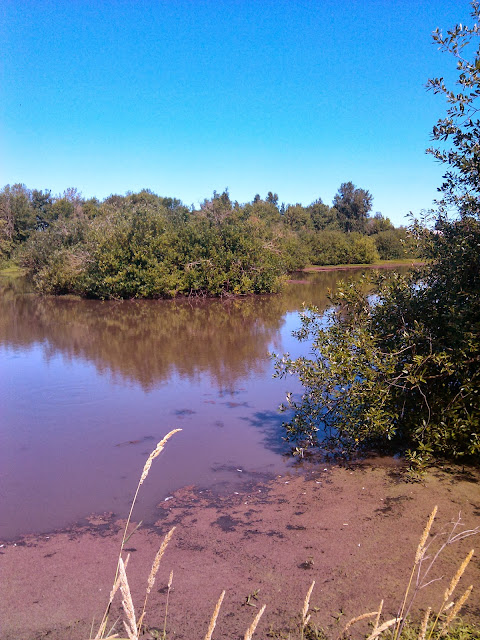Certainly I applaud all efforts to restore wetlands. It is very encouraging to see such efforts and associated costs going in to try to fix some of the damage we humans have inflicted on this planet due to ignorance and greed. My complaint here is with the bird aspect of wetlands restoration.
When trying to restore wetlands, I'm not sure that managers are thinking long-term. The word is "succession." If you remember back to 7th grade science class, you will remember that this refers to the changing of habitats over time. So, scrape the land bare of all those evil invasive plants and level to create a shallow pond, plant some native shrubs and trees to shade out the reed canary grass and try to out compete the blackberries, and voilà: a restored wetlands, right? Well, not for long. You see, the wetlands tend to channelize over time, the grasses and sedges are replaced by trees, and the ponds dry up.
This action is sped up by a certain plant I call a "native invasive species." It is the willow. This pernicious weed is a favorite of wetland plant ecologists--it grows well--really, really fast and dense. It quickly gives the appearance of a restored wetlands.
As far as bird watching goes, willows tend to clog up and destroy wetlands. They block the view and reduce avian biodiversity. Instead of numerous ducks, herons, and sandpipers, a few rather uncommon yellow warblers and willow flycatchers are found in summer, and not much else the rest of the year.
Here, let me show you. I have birded at Jackson Bottom Wetlands in Hillsboro, Oregon, since the mid-1980's and watched the changes. I love this place and know and respect many of the people that work here. It is a sample of many other locations--not an indictment of this one locale.
 |
| Ducks Unlimited pond at Jackson Bottom Wetlands, Oregon. Created 2012. |
This pond is not too different from that created adjacent to this 25 years ago. Do you want to see what this older pond looks like now--and what this new one will look like in a few years?
 |
| Pond at Jackson Bottom Wetlands, Oregon. Created about 1988. |
Assimilation.
 |
| Kingfisher Marsh, Jackson Bottom Wetlands, Oregon. |
The view stands (not to mention the huge and expensive back deck of the nature center) now look at nothing but dense willow thickets. Gone are the expansive views of the marsh. Forever.
When restoring wetlands, land use planners should plan in willow removal every 5 years. I recommend burning, as every little cutting of willow that falls on the ground will grow. I know this is completely opposite of recommended wetlands restoration theory. But I have warned you! The wetlands you think you are making today will soon be consumed by willows.
Oh, and one other thing since I am on my soap box, wetlands restoration planners.... The photography blinds and view stands should face north or west--not east or south into the early morning sun. Doesn't the person designing these structures have any insight into their use?